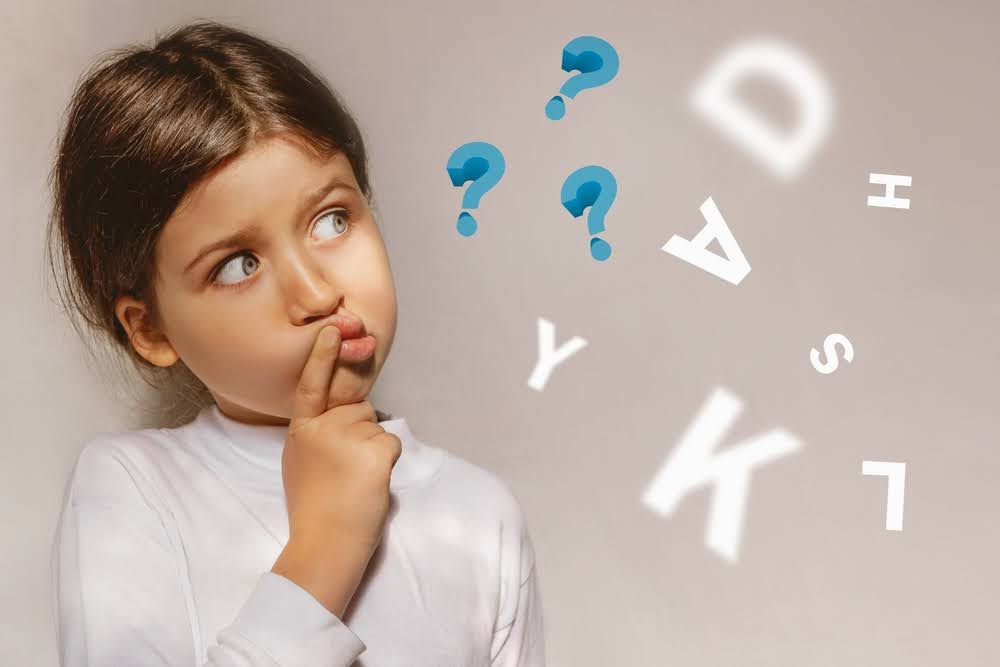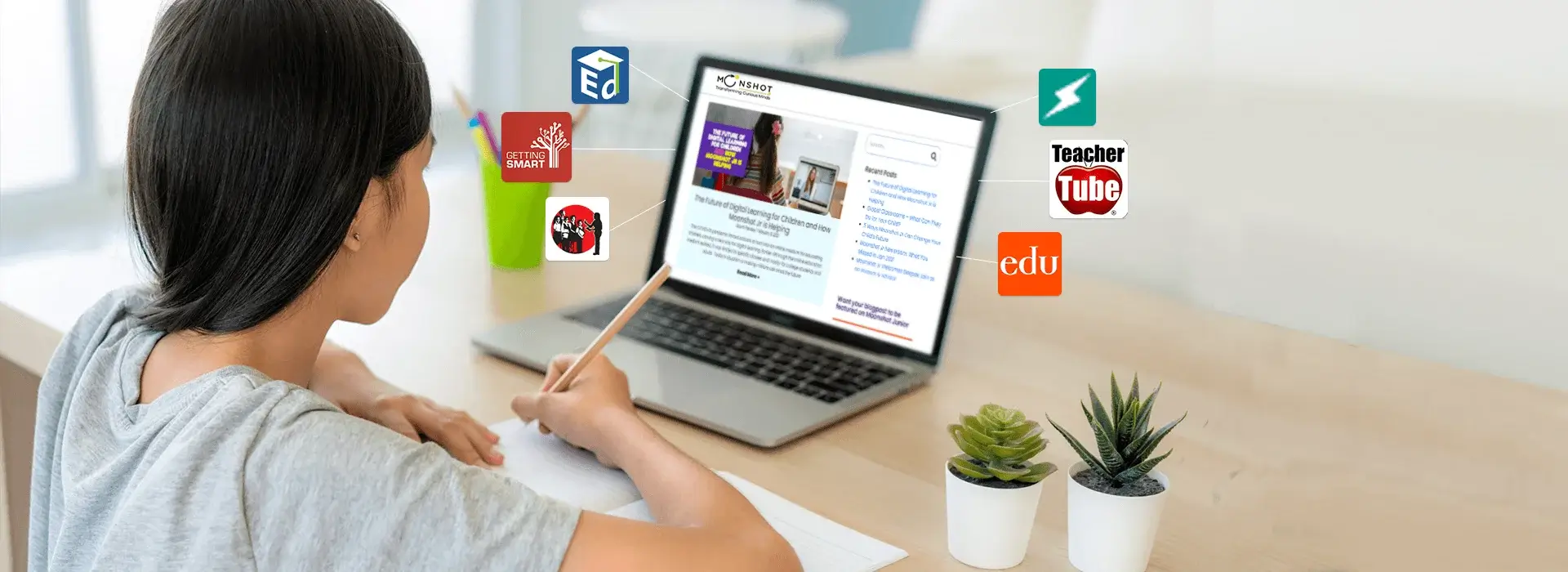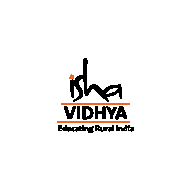Update: This article was last updated on 27th March 2025 to reflect the accuracy and up-to-date information on the page.
Knowing exactly what reading skills are and therefore their importance influences readers in their adoption of more individualized strategies for improvement of comprehension and retention. In this blog, reading skills are defined, ways of reading are presented, and a response to this “what is reading skills” is given in a refreshing and lively way.
Reading skills form the most basic foundation of the educational experience and personal development. Whether it be reading initiation in childhood or enhancement of reading skills in adulthood, an understanding of reading skills’ definitions and types is required to master the craft of reading. However, reading is more than just word recognition; it includes comprehension, fluency, vocabulary, and much more. This blog delves into reading types, the influence on learning, and skills improvement in reading, especially when targeted toward some serious challenges such as reading disabilities.
In an analysis done by the National Assessment of Educational Progress the reading skills that have been well employed by fourth graders are shown to increase four times the chances of graduating from high school on time. Thus the earlier on, the more the prospective benefits of these types of different reading skills shall be. Skimming, scanning, intensive reading, and also extensive reading form an essential part of the different types of reading that contribute extensively towards building reading abilities.
According to the National Assessment of Educational Progress (NAEP), students who read proficiently by fourth grade are four times more likely to graduate high school on time.
Understanding the Types of Reading Skills
Different types of reading skills cover a gamut of abilities that allow the reader to get, process, comprehend, and retain information. Basically, let’s present some definitions and categories of reading skills.
According to studies done by the Reading Rockets program, proficient readers, usually at upper elementary through adult levels, typically read 150-200 words per minute (WPM) with good comprehension. This clearly demonstrates the various strong reading capabilities that are so very much needing for academic and personal growth.
Understanding reading types helps in highlighting the best types of strategies that will work for improving comprehension. But what really are reading skills? And how do these reading skills affect learning? To put it simply, reading skills are like the backbone of literacy, allowing a person to simply decode and interpret text.
In simple terms, reading skills are metrics that show how certain activities enhance the ability to convert the printing of a language into information. One sort of reading has an importance from which another receives its meaning or better comprehension.
According to research from the Reading Rockets program, proficient readers (typically in upper elementary to adult levels) usually read 150-200 words per minute (WPM) with good comprehension.
Decoding
Decoding is the conversion of written words into sounds and meanings. For beginners, decoding is one of the first steps toward developing strong reading skills. This skill focuses on recognizing letter patterns and knowledge of phonetics, which are core definitions and types of reading skill. Once this foundational skill is developed, it will become much easier to tackle the more complex texts and enhance more varieties of reading skills.
Importance:
Have you ever struggled with decoding a particularly tricky word? Or found yourself reading a passage but not really understanding what it’s about? This challenge is common in different types of reading and can affect overall reading abilities. Understanding what reading skills are and practicing different reading types can help improve comprehension. Share your experiences and questions in the comments below. We’re here to help!
Comprehension
Comprehension is an important skill of understanding, interpreting, and retaining the meaning of a text. It requires an understanding of making inferences and remembering the material, involving critical engagement with content. When comprehension is set to a high level, a reader is able to glean all meanings from a text, from the literal to the deep conceptual considerations that could even transcend that particular text.
Importance:
Reading skills are the very transcription of reading. Without them, reading becomes a mechanical and superficial process. Good reading skills are established as the gateway to being successful in both education and daily life by tying together new incoming information and the stock of information already known by the readers. Knowledge of reading skills and their types aids in the enhancement of comprehension. There are different types of reading; knowing the reading skills can improve upon them. Discovering a reading type that best suits the learner will assist in making their reading more productive. So what are reading skills, and what impact do they have on comprehension? A clear definition of reading skills sheds some light on the whole process. Different reading types lead to different learning experiences. That is why understanding what reading skills are is important in the journey towards developing strong comprehension.
Vocabulary
Vocabulary is the collection of words known to an individual, which can also be used correctly in a context. A good vocabulary smoothens the way to probe into texts of a higher level of difficulty and thus enhances reading skills. Through a rich vocabulary, readers are able to decipher ideas that entail more complex associations with different written media and thus enhance their reading capacities.
Importance: A good vocabulary indeed contributes to an enhanced comprehension of textual reading and a familiarity with differing types of texts, which confirms the definition and types of reading skills. A person whose vocabulary is rich will gain a basic insight of each reading and all the variations therein by relating levels of language use to meanings and concepts across the board concerning the different types of reading and reading skills. The reading vocabulary is then reinforced by the study of reading skills: being skillful in relating reading types will empower one greatly to comprehend different kinds of text meanings and analysis.
Attention
Attention is the ability to concentrate on the text without distraction. Students with attention-related problems (such as those with ADHD) may find it more difficult to concentrate. This inability to focus, in turn, inhibits their progress in reading skills.
Importance: Attention is the main password to go through information and understand it correctly and efficiently. Sustained attention helps comprehend or retain what is read, in greater measure, in important situations such as examinations.
ADHD students are contrasted with focus problems since students with attention difficulties are targeted to stay in the context, which becomes even more troublesome; thus, impaired reading comprehension.
Fluency
Fluency is the ability to read smoothly and at an appropriate pace without hesitations or interruptions. For the reader, it matters greatly, for fluent readers recognize the words in phrases effortlessly and so concentrate on comprehending the meaning of the text. It has much importance for comprehension, for research has shown that fluent readers do much better in comprehension tests than those who read slowly.
Importance: Fluency benefits the reader when they process a text. Fluent readers are able to concentrate on comprehension, while the mechanics of reading skills definitions and their types slow the reader down. Building strong types of reading abilities applies to overall reading abilities; hence interaction with other types of reading becomes easier, allowing for improved comprehension. Knowing what reading skills are, and how they impact fluency itself, enables the development of various types of reading skills, and strengthens one’s reading proficiency.
While some learners develop reading skills quickly, others may face challenges due to reading disabilities. These disabilities can interfere with the process of decoding, comprehending, and retaining information. Let’s look at a few common types of reading disabilities:

Dyslexia happens to be one of the better-known reading disabilities. It mainly impairs decoding word sounds, leading to much greater trouble in the areas of fluency and, thus, some comprehension with reading skills. Reading skills definition and types implicate both dyslexia as being involved in the tasks of both decoding and comprehending. Research estimates that about 5-10% of the population has dyslexia. Dyslexics are often challenged in recognizing letters and words, thus making it difficult for them to keep pace with their peers in any kind of reading. With effective interventions, such as phonics-based strategies, students with dyslexia can improve their reading skills. Appreciating reading skills means an educator is able to provide support effectively to those children who are struggling with reading abilities. Defining what reading skills are truly becomes important for designing programs to intervene with students having dyslexia. Different types of reading skills will help in ensuring a systematic approach so that they find it amenable.
Hyperlexia means that children can learn reading skills at a very early age but may have trouble reading and understanding the meanings of the words. Despite effortless reading, children may fall short in the reading department against their comprehension abilities. For instance, a hyperlexic child can read a sentence with a high level of complexity yet will not be able to know the ideas or feelings expressed in the text. This exemplifies the separation between definitions of reading skills and types with respect to hyperlexia- it affects decoding rather than comprehension. Recognition of the types of reading skills indicates that a child excels in one form of reading but has difficulty in another. Within this framework, it becomes possible to pinpoint and reinforce the reading types, asking: “What are reading skills”? Reading types can characterize how and when word recognition was learned, thereby completely aiding and successfully implementing all types of comprehension.
Children with auditory processing disorder (APD) affects children’s ability to correctly process sounds. This often relates to their reading skills in word decoding and reading comprehension. Recognizing various reading skills and types allows one to discriminate between various reading abilities in building comprehension. Thus, often, children with auditory processing disorder misinterpret the spoken language-their inability to understand teh instruction, read fluently, or even follow a class. Reading difficulties can differ in terms of fluency and comprehension on inputs such as phonemic awareness, decoding, and fluency-all of which could probably be impaired by auditory processing disorder. These types of reading challenges faced by the APD children may then compound learning difficulties. What are reading skills? They are essentially the abilities that help in understanding as well as interpreting texts. Reading skills refer to the processing difficulties that may impede learning. Reading types represent the various means by which comprehension occurs. Reading skill inclusion means the presence of various abilities needed for truly effective reading. Thus, the reading skill of children with auditory processing disorder can be improved if identified early and through the availability of a specialized reading program to brighten some of these challenges.
To really boost your reading skills, it’s crucial to find techniques that work for you personally. Different strategies can make a big difference depending on your strengths and challenges. Here are a few techniques that have proven effective in improving reading abilities:
Previewing
Before we actually sat down to read, we first skimmed over the text. Reading skills involve techniques like previewing, looking at headings, subheadings, pictures, or bold-faced text to get a good idea of a passage. This will help readers to make prior knowledge accessible and bring attention to what is important; in doing so, they prepare themselves to understand better. Reading skills definition and types categorize different approaches to understanding written content. Reading strategies, such as scanning and skimming, are very useful in improving the reading capacity. It makes comprehension across all subjects easier if you understand what are reading skills. Creating reading types is very crucial in efficiently processing information. What is reading skills means being able to decode, interpret, and analyze a text effectively. Different types of reading skills help you in grasping the information according to the purpose behind reading.
Active Reading
Active reading is a reading strategy where readers interact with the text by engaging it with highlights, taking notes, and making inquiries while reading and thus helping the mind to keep focused on the material with increase retention. By prompting active and balanced interactions between the content, readers are able to develop and strengthen reading skills and are often more prepared to remember key information and make connections between concepts. This method enhances reading abilities and supports different types of reading skills, thus helping them in understanding reading skills definition and types as well. Knowing what are reading skills helps in comprehension improvement through different reading types. They give retention improvement and material interaction. Active reading makes an individual’s what is reading skills term stronger and increases the learning experience.
Phonics-Based Approaches
Phonics-based strategies can often offer great help for readers in decoding difficulty. They help breaking the words into sounds as well as pattern components helping the learner to sound the words more easily. For example, children with dyslexia rely mostly on this technique as it tends to teach the relationship between the letters and their respective sounds.
Visualization
Visualization is a powerful technique where readers create mental images of the scenes, characters, or concepts described in the text. This technique can significantly improve comprehension, especially for narrative texts. For example, when reading a story, a reader might visualize the setting, characters’ actions, and emotions, helping them better understand the plot and underlying themes.
Let’s explore a powerful example of how targeted interventions can transform reading skills. A study by the University of Michigan focused on elementary students with dyslexia, a reading disability that affects decoding, fluency, and comprehension. The research highlighted how specialized strategies, like phonemic awareness training and tailored reading exercises, significantly improved their reading abilities, helping them overcome common challenges associated with dyslexia.
This study sheds light on the reading skills definition and types, emphasizing how different types of reading interventions can support struggling learners. Understanding the types of reading skills is crucial in designing effective strategies to enhance reading types and overall comprehension. So, what are reading skills, and how do they impact learning? By exploring the reading skills definition, educators can better tailor lessons to different type of reading approaches, ultimately strengthening students’ foundational literacy.

The researchers worked with a group of 8-12-year-old students who had been struggling with reading skills. Despite being intelligent and capable of understanding spoken language, they needed to catch up academically due to their difficulty in decoding written words, which impacted their reading abilities. These students participated in a 12-week intervention program that involved a combination of phonics-based instruction, text-to-speech software, and multisensory learning techniques to improve their reading skills definition and types.
This study explored various types of reading skills, including phonemic awareness and fluency, to determine effective strategies for enhancing reading types. By incorporating diverse types of reading, the intervention aimed to provide a well-rounded approach to supporting students. The program also helped clarify what reading skills are and their impact on comprehension. Understanding what reading skills are is crucial for developing effective teaching methods.
By the end of the program, the students showed significant improvements:
- Decoding skills improved by 30%.
- Reading fluency and comprehension scores rose by 25%.
- Vocabulary acquisition also improved, allowing them to engage with more complex texts.
This case study demonstrates the powerful impact of combining traditional reading techniques with modern tools and technology, especially for those with reading disabilities. It also emphasizes the need for personalized approaches to reading education.
The way we develop and improve reading skills is changing rapidly, thanks to technological advances and new research. The integration of artificial intelligence, personalized learning, and data-driven approaches will likely shape the future of reading education. Let’s take a closer look at some of the exciting trends that are likely to impact types of reading development in the coming years:
AI in Reading Education
Artificial intelligence is already starting to play a vital role in personalizing learning experiences for students. AI-powered tools can analyze a learner’s reading habits, identify areas of weakness, and suggest tailored interventions. For example, AI-driven apps can adapt to a student’s progress, offering exercises that become progressively more challenging as the student’s skills improve. These technologies are revolutionizing how we approach reading, particularly for those with reading disabilities.
Data-Driven Approaches
As educational data becomes more accessible, teachers and parents are using data analytics to track a learner’s progress and adjust their strategies accordingly. This allows for more customized instruction that can address specific areas where a student might be struggling, such as decoding or comprehension. By using tools that measure reading fluency and comprehension in real-time, educators can provide more targeted support, leading to better outcomes for students.
Enhanced Assistive Technologies
The future of reading will likely see a rise in the development of even more advanced assistive technologies. For example, we may see the integration of virtual reality (VR) to immerse students in stories, helping them visualize complex concepts and improve comprehension. VR could also be used to simulate real-world scenarios where reading skills are essential, providing an interactive and engaging learning environment for students.
Long-Term Impact on Society
As the use of advanced reading techniques and technologies becomes more widespread, we can expect a more literate society overall. This could lead to improvements in various sectors, from education to the workplace. By enhancing reading skills at an early age, we’re equipping the next generation with the tools they need for success in an increasingly information-driven world.
Research from the International Literacy Association shows that reading is linked to increased job opportunities, better health outcomes, and overall life satisfaction.
Reading isn’t just a basic life skill; it’s constantly evolving. While traditional methods like repeated practice and phonics still play a key role in improving reading skills, modern tools and technologies are opening up exciting new possibilities. While understanding the reading skills definition and types is essential, it’s equally important to explore the types of reading and how they impact learning. For individuals with reading disabilities, customized interventions and techniques can be game-changers. Whether it’s using apps designed for dyslexia or practicing with speech-to-text technology, the right strategies can enhance reading abilities significantly. By staying updated on the latest trends and embracing diverse approaches, we can ensure that everyone has the chance to become a confident and skilled reader. Knowing what are reading skills and the different reading types can further help in selecting the best learning strategies. Understanding the type of reading suitable for each individual fosters better comprehension and fluency, ensuring effective literacy development.
Moonpreneur is dedicated to transforming conventional education, preparing the next generation with comprehensive learning experiences. Our Innovator Program equips students with vital skills in AI/ML, Robotics, Coding, Game Development, and App Development, fostering entrepreneurship through hands-on learning. This initiative aims to cultivate the workforce of tomorrow by integrating innovative technologies and practical skills in school curriculums.
Register for a 60-minute free workshop today!
Frequently Asked Questions
Answer: Reading skills should be assessed regularly to track progress. It’s generally recommended that they be assessed every 4-6 weeks, allowing time to adjust strategies as needed. Frequent assessments help identify areas of improvement and provide targeted support to address any challenges a student may face.
Answer: This term refers to a student’s reading ability compared to the average reading level of students in a specific grade.
Answer: Bilingual students can leverage their knowledge of their first language to boost reading skills in a second language. Exposure to culturally relevant materials, small-group instruction, and active participation can help bridge the gap between their native language and English.
Answer: Improving reading comprehension requires active engagement with the material. Techniques such as summarizing, annotating, and asking questions while reading are crucial. Practicing with different types of texts—narrative, expository, and persuasive—can also significantly enhance comprehension abilities.
Answer: Reading aloud enhances understanding by involving multiple senses. It improves pronunciation, pacing, and retention. Reading aloud also boosts memory and comprehension by reinforcing the connection between sounds and words.
Answer: A strong vocabulary is essential for understanding and retaining information while reading. Expanding vocabulary through exposure to new words, using context clues, and regularly practicing new terms can dramatically improve reading comprehension.


























My son used to struggle with understanding what he read, but once we tried out different reading techniques—like skimming for the main points and going deeper for details—it was a game changer. Now, he’s more confident and can approach reading with a strategy. It really showed him how different types of reading can make things easier and more interesting!
Sometimes, we overlook our child’s struggles or hesitate to accept learning challenges like dyslexia, thinking it might just be a phase. But the case study on helping children with dyslexia given in the blog shows that with the right approach—like multi-sensory learning and phonics practice—real progress is possible. It’s a powerful reminder that acknowledging these challenges and tailoring strategies to each child’s needs can make all the difference. Have you noticed symptoms of learning differences in your child, and how have you approached it?